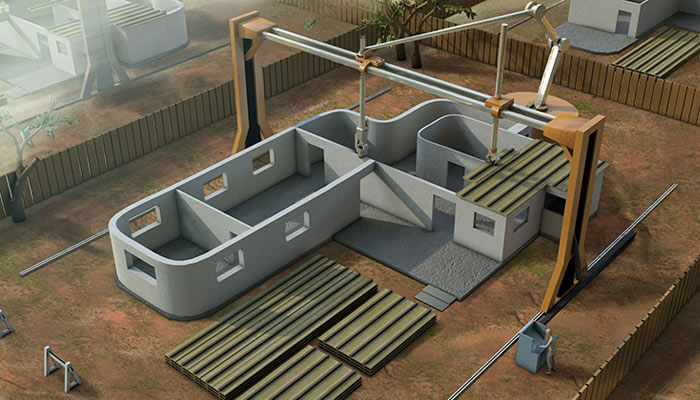As we move through the changing landscape of engineering, one innovation stands significantly in the sector of building: 3D manufacturing. This groundbreaking technology is revolutionizing the way structures and structures are designed and assembled, ushering in a new age of productivity, eco-friendliness, and originality.
Transforming Infrastructure: One Stratum at a Moment
The integration of 3D fabrication in construction offers numerous game-changing benefits. Chief among these is the significant decrease in material excess. Classic building methods usually lead in considerable waste materials that add to ecological depletion. In opposition, 3D fabrication employs a accurate incremental approach, using only the necessary quantity of substance and thus limiting excess significantly.
Another noteworthy advantage is the dramatic decline in building period. Undertakings that historically require extended durations can be completed in a segment of the duration with 3D fabrication technologies. This speed-up is due to the automated nature of 3D devices that can function 24/7 without human intervention, considerably minimizing complete development deadlines.
Moreover, 3D fabrication opens up possibilities for building intricate, tailored structures at no extra price. The adaptability of 3D printers allows for elaborate designs and structures to be produced that would either be exceptionally costly or unfeasible to attain with traditional infrastructure techniques. This capability not only elevates architectural visual appeal but also allows designers to maximize plans for better performance and longevity.

Lowering Expenses and Boosting Reachability
Expense cutting is yet another significant perk introduced by 3D fabrication in infrastructure. By minimizing workforce spending and shortening the duration needed to finalize projects, the total expenditure linked to constructing frameworks is minimized. Additionally, cheap 3D printing machines are getting more accessible, placing this technology within reach of startup businesses and entrepreneurs eager to explore its possibilities.
The cost-effectiveness of these devices also paves the way for creativity in associated areas such as fabric printing. While chiefly known in infrastructure industries, the reach of 3D manufacturing expands into multiple domains including design. Here, designers experiment with 3D printed garments, expanding creative constraints and reshaping material handling while gaining cost-effective manufacturing costs.
A Green Future Driven by Progress
Sustainability is another cornerstone of this technology’s appeal in the construction sector. 3D manufacturing promotes a environmentally friendly method to development by reducing material waste and energy usage. Additionally, it supports the application of green resources like recycled synthetics or blended materials, which moreover decreases the ecological impact of this traditionally high-emission industry.
The worldwide transition in favor of green methods finds a strong ally in 3D manufacturing systems, likely reshaping how structural regulations and requirements are formulated in the future. By integrating these innovative methods, the building field steps closer to achieving greener business practices.
Turning Visions to Existence
Visualize community centers in underprivileged neighborhoods being built within a short time to address immediate demands or architects crafting marvels reminiscent of organic formations that blend perfectly into their landscapes – such situations are not just theoretical but are quickly becoming achievable through 3D printing.
While these breakthroughs signify just the beginning, they suggest a time where construction harmonizes seamlessly with both human ambitions and environmental stewardship.
If we advance on this path, infrastructure will not only represent the structural development of structures but also symbolize a pledge to forward-thinking thinking and responsible existence. Bridging artistry with functionality, 3D fabrication is set to transform our built environment in manners we are just starting to understand.
Through continual improvements and an adoption of these cutting-edge strategies, our developed spaces will surely evolve into reflections of human brilliance fueled by the accuracy and endless possibilities of 3D manufacturing.
For more information about may in 3dvisit this useful site
